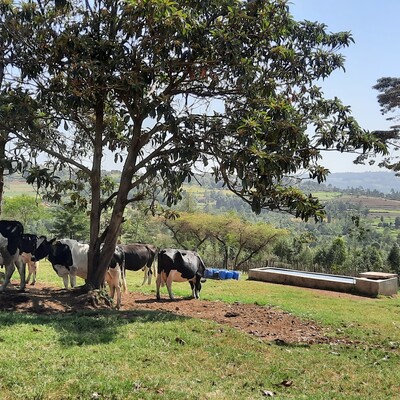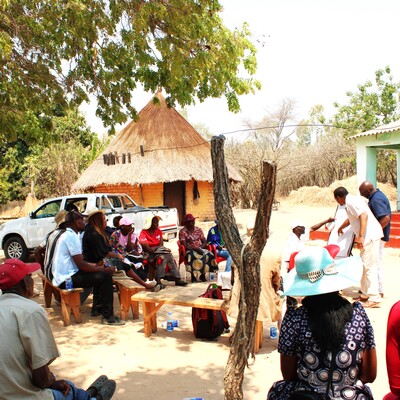
Integrating crops and livestock for improved food security and livelihoods in rural Zimbabwe
The overall goal of this ACIAR sponsored project is to identify, test and prove ways to increase agricultural production, improve household food security, alleviate poverty and thereby reduce food-aid dependency in rural Zimbabwe through better integrated crop and livestock production and market participation. The project objectives underpinning this goal are:
- To increase productivity of smallholder crop-livestock farming systems in four districts in two contrasting agro-ecological regions of Zimbabwe by identifying and adapting technologies and associated management practices.
- To improve farmers’ access to resources, technologies, information and markets by characterising and strengthening crop (maize, sorghum, legumes) and livestock (goats, cattle) value chains
- To increase knowledge and skills of research and extension services and agribusiness, enabling the former to design and implement integrated farming systems and value chain research and the latter to target and scale out knowledge generated by the project elsewhere in Zimbabwe.
The majority of rural dwellers in Zimbabwe depend on smallholder crop-livestock farming based on production of maize, other cereals and legumes along with small and large stock including goats and beef or dairy cattle. Crop yields and livestock off-take rates are presently low and declining, and, even where production surpluses are available at the farm gate, market value chains are not providing effective links between consumers and producers.
As a result, food deficits are commonplace and opportunities for income generation are severely lacking in rural areas. Whilst food aid offers a short term measure against hunger, the medium to longer term priority goal for the Government of Zimbabwe and external donors is to reduce the chronic problem of food aid-dependency, improve food security and alleviate poverty.
Past and present research, particularly that conducted by the agencies represented in this project partnership (ILRI, CIMMYT, ICRISAT, CSIRO, QAAFI in partnership with DEEDI) and their national partners identified promising innovations and strongly suggests that the productivity of smallholder crop-livestock systems can be substantially enhanced when their component activities are more efficiently integrated and intensified (see Attachment 2). The project’s research will also test ways to improve linkages amongst market chain actors that allow smallholder enterprises to actually exploit these.
The project integrates a participatory technology development framework (including baseline diagnostics, stakeholder workshops, systems simulation modelling, technology screening, on-farm trials and demonstrations) with value chain analyses (market options and performance) that feed into multi-stakeholder platforms for knowledge exchange thereby linking to effective impact pathways.
The project will operate in two contrasting farming systems: in two districts in natural region (NR) II (Murehwa and Goromonzi in Mashonaland, which are relatively high potential) and two districts in NR IV and V (Nkayi and Gwanda respectively in Matabeleland, which are semi-arid, marginal areas). There will be direct and intensive interactions with 480 core smallholder women and men over three years, active support and engagement with approximately 5,000 potential adoptees; and exposure to project outputs for up to 20,000 households.
The immediate users of the research outputs will include scientists, NGO development professionals and extension staff who will gain new knowledge of technologies and effective approaches to enhancing smallholder productivity and market engagement. Smallholder households will benefit from more productive, integrated crop-livestock farming systems, increased turnover and income, reduced risk and increased food security. Other end-users and beneficiaries include small and medium sized agribusiness. The project will take clear steps to target gender-equitable potential impacts and the needs of disadvantaged groups in the research areas.
To maximise the sustainability and wider economic benefits of project results, the research will identify product demand, market chain performance (both formal and informal) and implications for pricing policies. The synergies between research and development partners will be facilitated including the Rural Agribusiness Restructuring Program the multi-donor Protracted Relief Programme, or the latter’s successor, and its successor NGOs operating in the research areas. Mutually beneficial links with the private sector will arise from increased demand for inputs and services and turnover of agricultural products.


















